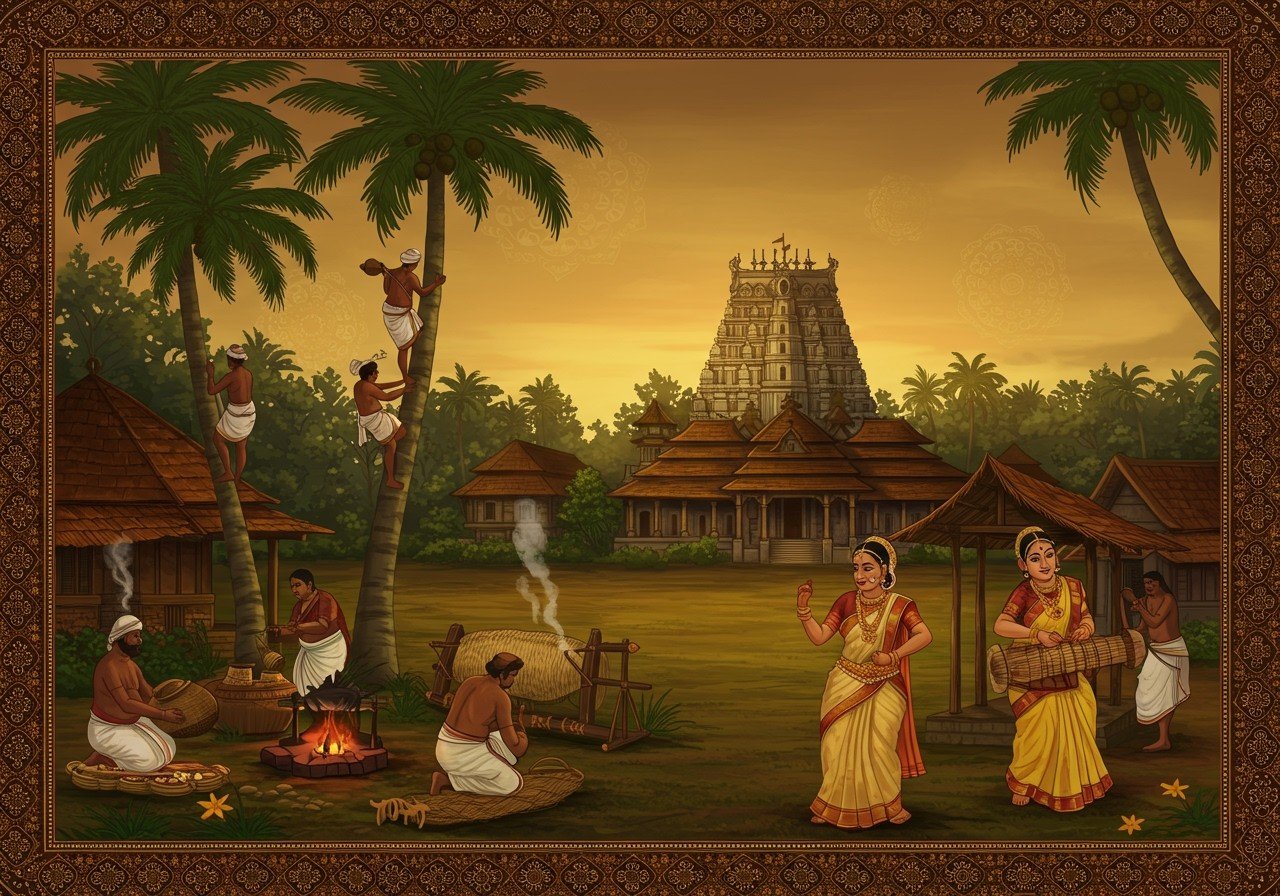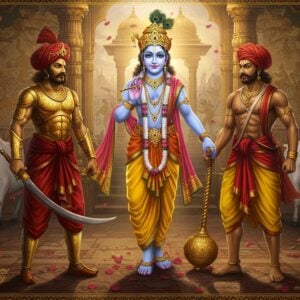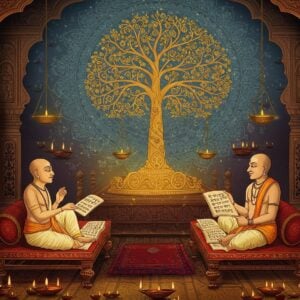
The Ezhava community, a vibrant thread in the tapestry of Kerala’s social fabric, holds a captivating history and a rich cultural legacy. Also known as Thiyya or Tiyyar in the Malabar region and Chovar in the south, this community represents a significant portion of Kerala’s population. This blog post delves into the fascinating journey of the Ezhavas, exploring their origins, traditions, and the challenges they overcame to achieve their present-day prominence. For those seeking to connect with their roots or explore India’s diverse cultural landscape, understanding the Ezhava community offers a profound glimpse into the heart of Kerala’s traditions. If you’re looking for authentic ritual items to honor these traditions, poojn.in, India’s leading online store for cultural goods and services, offers a wide selection to support your spiritual needs.
A Journey Through Time: The Ezhava Story
The origins of the Ezhavas are shrouded in captivating narratives and folk tales. Some believe they descended from coconut farmers who journeyed from Sri Lanka, while others suggest a connection to Buddhists or emissaries from the Magadhan empire. Ezhava folk songs paint a vivid picture, recounting the tale of four bachelors sent by the Sri Lankan king to Kerala at the request of Chera King Bhaskara Ravi Varma in the 1st century AD, with the mission of establishing coconut farming in the region. Another version narrates the arrival of eight martial families dispatched by the Sri Lankan king to quell a civil war. These stories, passed down through generations, add to the mystique and intrigue surrounding the community’s ancestry.
- Origins and Early History: The Ezhavas trace their roots back to the very soil of Kerala, with their presence intertwined with the land’s history. Myths and folk songs weave a rich narrative of their origins, adding a touch of magic to their story. One popular narrative suggests their descent from coconut farmers who migrated from Sri Lanka, bringing their agricultural expertise to the shores of Kerala.
- Social Standing and Challenges: Historically, the Ezhavas faced societal challenges, particularly before India’s independence. They were often categorized as Avarna (out-caste) by the dominant castes, leading to discrimination and limitations on their social mobility, access to education, and occupational choices. Despite these adversities, their spirit remained unbroken, and they persevered with unwavering resilience. You can learn about similar stories of faith and devotion on our blog post about Guruvayur Temple.
A Renaissance of Spirit: Reform and Upliftment
The Ezhava community’s path was not without its struggles. Before India’s independence, they faced social discrimination and were considered Avarna (out-caste) by the upper castes. Restrictions limited their access to temples, public places, and even basic rights. However, from these challenges arose a powerful wave of reform movements, spearheaded by visionary leaders like Sri Narayana Guru, Mahatma Ayyankali, Dr. Palpu, C. Kesavan, and T. K. Madhavan. Sri Narayana Guru, a towering figure in Kerala’s social reform movement, emerged as a beacon of hope, leading the Ezhavas towards upliftment and empowerment. His teachings emphasized education, self-reliance, and social equality, igniting a spark of transformation that resonated throughout the community. His efforts silently laid the foundation for the Kerala Renaissance, a period of remarkable social and cultural awakening.
Cultural Expressions: Traditions and Rituals
The Ezhavas possess a rich cultural heritage expressed through diverse traditions and practices. Their family systems vary across Kerala, reflecting the unique influences of different regions.
- Family Structures: The intricacies of Ezhava family systems showcase regional variations, with northern Malabar adhering to matrilineal structures with patrilocal property arrangements. In contrast, northern Travancore practiced matriliny but typically followed matrilocal property arrangements, while southern Malabar observed patrilineal systems with partible property. These varied traditions reflect the adaptability and diversity within the community. Later, legislative reforms in 1925 for Malabar and 1933 for Travancore further reshaped these customary family structures. For those interested in learning more about the significance of family in Indian culture, you might find our blog post on Tulasi Peeth Seva Nyas insightful, as it highlights the importance of community support and family values.
- Artistic Heritage: The Ezhavas have a deep connection to the arts, finding expression through traditional forms like Kathakali, Koothu, Ottam Thullal, and Mohiniyattam. These vibrant art forms showcase their creativity and artistic talents, adding another dimension to their cultural richness. These dances aren’t just performances; they’re a way of life, narrating stories, expressing emotions, and connecting with their spiritual roots. For those who appreciate traditional art forms, Poojn.in offers beautifully crafted Baran Dalas, essential for various ceremonies and rituals.
Wedding Celebrations: Simplicity and Significance
Ezhava weddings are a testament to the beauty of simplicity, often celebrated as one-day events without excessive grandeur. These ceremonies hold deep cultural significance, marking the beginning of a new chapter in life. The Nishchayam ceremony initiates the wedding proceedings, followed by prayers to Lord Ganesha by the groom and to the Goddess of Power by the bride. The family astrologer, guided by the horoscopes of the bride and groom, selects an auspicious date and time for the marriage, ensuring that the union is blessed with good fortune and harmony. Essential items for wedding ceremonies, such as Kumkum and Roli, can be conveniently found on Poojn.in.
From Tradition to Modernity: Evolving Occupations
Historically, Ezhavas held diverse occupations, including Ayurvedic physicians, warriors, Kalari trainers, and traders. Societal shifts led some to engage in toddy tapping and arrack making. However, many families preserved traditional occupations like farming, demonstrating a strong connection to their roots. For those seeking traditional ingredients for Ayurvedic practices or culinary purposes, Poojn.in offers a selection of spices like black cardamom and cloves. Today, the Ezhavas have diversified into a wide range of professions, showcasing their adaptability and entrepreneurial spirit.
The Ezhavas Today: Embracing the Future
In contemporary Kerala, the Ezhavas continue to contribute significantly to various fields, from education and politics to business and entrepreneurship. While globalization and modernization have influenced their lifestyles, they remain deeply rooted in their cultural heritage. The community actively engages in efforts to preserve and promote their traditions, ensuring that their rich legacy continues to flourish. Learn about the Tulsi Peeth and how it represents a part of preserving cultural heritage.
For all your puja needs and to support the preservation of these rich traditions, visit poojn.in. We offer a wide variety of authentic puja items, conveniently delivered to your doorstep.
Frequently Asked Questions
What distinguishes the Ezhava community? The Ezhava community, a prominent group in Kerala, stands out due to its unique customs, traditions, and historical contributions to the region’s social and economic development. Their rich cultural heritage sets them apart as a distinct and vibrant part of Kerala’s diverse population.
How has the Ezhava community evolved historically? The Ezhava community has navigated a remarkable journey through history, marked by both challenges and triumphs. From their traditional roles in agriculture and trade, they have adapted to changing times, embracing diverse professions and making significant contributions to Kerala’s growth and development.
What key traditions define the Ezhava community? The Ezhava community’s traditions are an integral part of their identity, reflecting their deep-rooted cultural values and beliefs. They celebrate festivals like Onam and Vishu with great fervor, engaging in rituals and ceremonies that honor their heritage and strengthen their social bonds. Their traditions encompass a wide range of practices, from distinctive wedding ceremonies to artistic expressions like Kathakali and Mohiniyattam.
Why does the Ezhava community hold importance in Kerala’s history? The Ezhava community has played a pivotal role in shaping Kerala’s history. Their contributions to social reform movements, particularly under the leadership of figures like Sree Narayana Guru, have been instrumental in promoting equality, education, and social justice. Their involvement in the state’s economic development further solidifies their significance in Kerala’s narrative.


